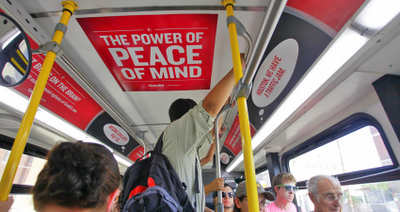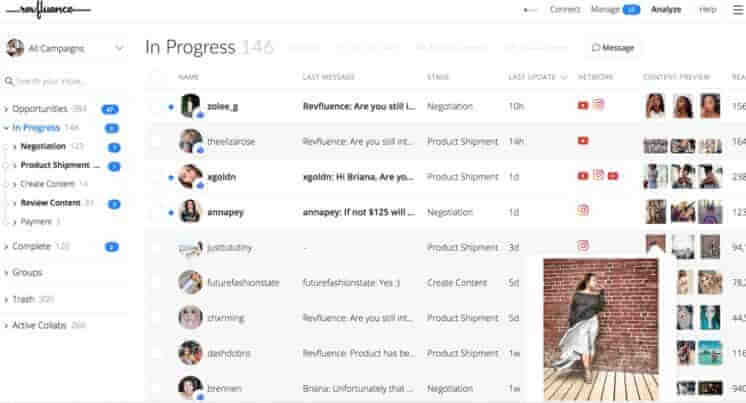
TV Advertising Budget
Television is a powerful medium for advertisers to communicate their message. Advertisers can reach large audiences with their ads, as millions of viewers are simultaneously watching the same program. However, as more people are choosing to cut the cord and watch content on a streaming service like Netflix, traditional television is seeing some declines in ad spending.
Despite these limitations, television remains an extremely powerful medium for advertisers. Television continues to be one of most profitable media channels globally. Television is the media channel with the highest investment rates.
Cost of TV Ads
The cost for a television advertisement can vary depending upon the product or service that it promotes and the time spent on it. This can make budgeting difficult. But the cost to produce a television commercial can be broken down into three parts: the network fee and the syndication charge.

TV advertising can be costly, so many companies don’t wish to spend much money on it. Smart TV technologies can be used to help reduce the production cost of your ad campaign.
Advertisements for TV Connected
Although streamer and linear television are often considered to be competing platforms, both technologies can work together to help brands reach a wider audience. Brands must consider how they can leverage advertising dollars to reach the right audience, whether that's through linear or connected TV.
Connected TV, a new ad format, is intended to connect viewers to their favorite shows. It uses both TV technology and online data in order to identify the most interested viewers. The result is an ad targeted at specific households based their age, gender or other demographics.
This allows advertisers to personalize the advertising experience for each viewer. This can help increase brand awareness and drive conversions. It is also easier to track and measure the impact of campaigns.

According to estimates, 36% of TV viewers will watch content on connected devices by 2022. Even though ConnectedTV ad spend makes up only 18%, it can be a significant portion of a brand’s overall marketing budget.
As it continues to help advertisers build their brands, and drive sales, this ad type will likely grow over the next few years. Consumers will be able to access content anywhere they are and view ad free versions of popular shows.
FAQ
What are the basics of radio advertising?
You should understand how the different types of media affect each other. Remember that all media types are complementary, not competing.
Radio is best used as an extension of television advertising. It can reinforce key messages and provide additional information.
Radio listeners often find TV commercials too lengthy. Radio ads are typically shorter and less costly.
What is branding?
Branding is a way to communicate who and what you are. It's how people remember you and your name.
Branding refers to creating a brand that is memorable for your company. A brand is not just a logo but also includes everything from your physical appearance to the tone of voice used by employees.
A strong brand helps customers feel confident in buying from you because they know exactly what they're getting. They also feel more confident choosing your products than those from competitors.
Apple is an example of a well-branded business. Its brand is known worldwide for its sleek design, high-quality products, and customer support.
Apple's brand has become synonymous with technology. Apple is synonymous with technology.
You should think about creating a brand if you are considering starting a business. This will give your business a face and personality.
What is advertising?
Advertising is an art. Advertising is not about selling products. It's about creating emotional connections between people and brands.
Advertising is about communicating ideas through images and stories.
Communication must be clear and persuasive. Your target market should be able to relate to the story you tell.
Advertising is thus different from other forms, such public speaking, writing, and presentations.
You are building a brand identity when you run a successful advertising campaign.
This is how you are memorable. You will be remembered by others.
What do you need to know about print advertising?
Print advertising is a great medium to communicate with customers. Many companies use it to promote products and services. It is designed to attract the attention of the customer.
Print ads are usually one-page long. They contain text, images, logos, and any other graphics. They can also include sound and animation as well video and hyperlinks.
These are the main types of print ads:
1. Brochures - These are large format printed pieces designed to attract people into stores. Brochures often feature eye-catching designs and colorful photos.
2. Catalogues - These are smaller versions of brochures. They are sent to customers who have requested specific information.
3. Flyers - These are small pieces of paper distributed at events such as concerts and fairs. They can be given at retail outlets but must be paid for.
4. Posters - These are larger versions of flyers. They are placed on walls, fences, buildings and other surfaces. They are usually created using computer software programs designed to catch passersby's attention.
5. Direct mail - This refers to letters or postcards mailed directly to potential customers. These are sent out by companies to remind customers about their business.
6. Newspaper Ads – These are ads that appear in newspapers or magazines. They are usually quite long and contain both text and images.
What do you need to know about television advertising?
Television advertising is an extremely effective medium for reaching many people at once. It was also very expensive. However, it can be powerful if you use the device correctly.
While there are many types and styles of TV ads, most share some common traits. Planning any TV ad should start with ensuring it fits in its category. You shouldn't attempt to make a lifestyle commercial the same as a product ad. Your message should remain consistent throughout the campaign.
It is important to remember that ads are best aired during prime-time. This is because most viewers watch TV while relaxing in front of the set. You want them to be relaxed enough to focus on your words.
The bottom line is that even if you have a lot to spend, it doesn't necessarily mean you'll be able to get great results. It may be the reverse. According to a University of California study, commercials that aired on popular TV shows had lower sales than those that aired on unpopular programs. Make sure you are doing it right if you're spending a lot on TV advertising.
What is an advertiser buyer?
An advertiser can buy advertising space in TV, radio, or print media.
Advertisers are charged for the time their message will appear.
They don't necessarily look for the best advertisement, but instead seek out the most effective way to reach their target market.
Advertisers may have demographic information such as the age, gender, marital status, income level, occupation, hobbies, and interests of their customers.
These data can be used to help advertisers decide the most effective medium. They might decide direct mail is more effective for older people.
Advertisers also look at the competition. Advertisers will look at the competition to see if similar businesses are nearby.
In addition, advertisers consider the size of their budget and the amount of time they have to spend their money before it expires.
How much does it cost for social media advertising?
You should be aware that social media advertising costs money. You will be charged monthly depending on your time on each platform.
Facebook: $0.10 per 1,000 impressions
Twitter - $0.20 Per 1,000 Impressions (if you tweet).
If you send invitations, Linkedin: $0.30 per 1,000 impressions
Instagram - $0.50 Per 1,000 Impressions
Snapchat - $0.60 Per 1,000 Impressions ($0.40 per User)
YouTube - $0.25 for 1,000 views
Tumblr – $0.15 per 1000 impressions for text postings
Pinterest - $0.05 per 1,000 impressions per month
Google + - $0.15-$0.20 per 1 million impressions
Tumblr $0.15- $0.20 for 100,000 impressions
Vimeo - $0.20- $0.25 per 10,000 impressions
Soundcloud - $0.20 - $0.0.25 for 1,000,000 plays
StumbleUpon - $0.20 -$0.25 per 1 billion pageviews
Digg - $0.20 - $0.25 per 1000 diggs
Reddit: $0.20-$0.25 for 1000 comments
Wordpress - $0.20--$0.25 per 500 comments
Flickr - $0.20 -- $0.25 per 5,000 photo uploads
Statistics
- Worldwide spending on advertising in 2015 amounted to an estimated US$529.43 billion. (en.wikipedia.org)
- Advertising's projected distribution for 2017 was 40.4% on TV, 33.3% on digital, 9% on newspapers, 6.9% on magazines, 5.8% outdoor, and 4.3% on radio. (en.wikipedia.org)
- Advertising spending as a share of GDP was about 2.9 percent. (en.wikipedia.org)
- It's 100% reliant on your website traffic. (quicksprout.com)
External Links
How To
How to run paid ads
Paid advertising refers to any marketing activity where you pay money for something. Paid advertising can include purchasing ad space on websites or placing ads in magazines or newspapers. You could also pay someone to promote your company online. Paid advertising can include display advertising, email marketing or mobile app promotion.
To ensure your campaign works well, you should know how much it costs and what kind of results you expect. Also, consider whether you can get enough return-on-investment (ROI), to justify the expense.
Before you launch a paid campaign for advertising, you must first establish if potential customers are interested in your product or services. If you have no idea, then start with free advertising like posting flyers around your neighborhood, making announcements at school, or sharing your message through social media sites.
Once you know your target audience, you can decide on the best way to reach them. Advertise in local newspapers if you are selling organic foods. On the other hand, if you sell cosmetics, you might choose to advertise on TV or radio stations.
Once you have decided who you want to reach out to, it is time to determine how much money you are willing to spend. There are several ways to calculate your budget. You can divide your budget into daily, weekly and monthly amounts. The second way is to use a spreadsheet program to